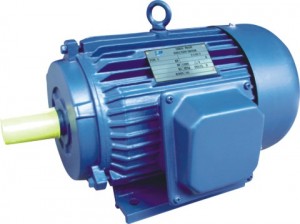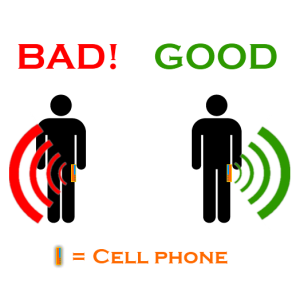12 March 2014 | Computers, How Does it Work? |
 In this day and age of well-known NSA spying, everyone keeps saying that the only way to be safe is to use SSL/TLS, commonly known as “browsing with https://”.
In this day and age of well-known NSA spying, everyone keeps saying that the only way to be safe is to use SSL/TLS, commonly known as “browsing with https://”.
The sad reality is that HTTPS does virtually nothing to protect you from the prying eyes of alphabet soup agencies – or anybody else with enough knowledge about how these supposedly “secure” connections actually work.
It’s true that connecting to web sites with SSL will certainly prevent “script kiddies” and other more winky opponents from eavesdropping on your surfing or otherwise interfering in your affairs. But as for the Real Bad Guys, forget it…
We shall begin by taking a brief dive down the rabbit hole of SSL, hopefully in a way that will make sense to even the least technically inclined among us.
This issue is, after all, so extremely important that I think everyone needs to understand what is really going on, and how web security actually works, without needing a PhD in cryptography, computer science, or engineering!
(more…)
15 September 2013 | Gizmos, How Does it Work? |
 Okay, so I just can’t keep quiet about this one.
Okay, so I just can’t keep quiet about this one.
Apple has released their latest iPhones, the 5S and the 5C. While the release of the 5C is particularly hilarious given that it’s a “low-end” phone that Jobs said Apple would never release because they’re a “premium products” company.
That’s not what’s really bugging me, although it does help me laugh myself to sleep at night.
What’s bugging me is the fact that the #1 “attraction” in the new iPhone is the 64-bit processor.
Really?
Does a 64-bit processor actually matter at all? Is it really 2X faster?
No, it isn’t.
(more…)
9 December 2012 | Energy, Gizmos, How Does it Work? |
 These days, it’s all about energy efficiency.
These days, it’s all about energy efficiency.
In some countries, you can hardly even buy normal incandescent light bulbs any more. You are left with a choice of slightly more efficient “a bulb inside a bulb” halogen options, or compact fluorescent light (CFL) bulbs.
Well, there are some problems with CFL bulbs, as we shall see.
Now, LED bulbs have made their big debut on the scene. They use even less power than CFLs, and supposedly they are better for the environment and all that jazz.
In some ways, this is true – but at a cost unless you are careful about which LED bulbs you pick.
And, since LED bulbs are so darn expensive, you need to choose wisely. Here’s how…
(more…)
16 October 2012 | Gizmos, How Does it Work? |
 So, you got yourself a nice set of speakers, a good home theater amplifier, a fancy blu-ray player, and a giant flatscreen. Now you just want to hook it all together and enjoy the lovely 7.1 channel sound. Piece of cake, right?
So, you got yourself a nice set of speakers, a good home theater amplifier, a fancy blu-ray player, and a giant flatscreen. Now you just want to hook it all together and enjoy the lovely 7.1 channel sound. Piece of cake, right?
No.
In fact, it is relatively easy to connect everything together and make it “work”, but it is downright mind-numbing to figure out if you are getting the full experience. Or, one thing may work, but other things do not.
For example, maybe Dolby Digital 5.1 tracks play nicely in surround sound, but 7.1 channel sound like Dolby TrueHD and DTS-HD Master Audio do not.
And sometimes, nothing works at all.
Don’t worry, though: you are not alone. Do a simple search on Google, and you will find tons of posts on multiple forums with people who are just as confused as you are.
Frankly, I’m not surprised. There are so many standards and little technical details involved, you darn near need a PhD in electrical engineering just to enjoy a movie with HD sound.
And so, I present my quasi-guide to Home Theater Setup!
(more…)
25 August 2012 | How Does it Work? |
 A lot of people wonder how alternating current (AC) induction motors work. In fact, I myself wondered exactly how they worked for a long time.
A lot of people wonder how alternating current (AC) induction motors work. In fact, I myself wondered exactly how they worked for a long time.
You see, I’m an electrical engineer, so I should know these things from my university education.
Unfortunately, in this age of digital everything, power electronics tends to get the shaft in favor of microprocessor design, digital signal processing, and so on. Digital is where the bucks are, you see…
And so, for the longest time, I never actually fully understood how AC induction motors work. DC motors are easy enough to understand, but the AC versions are a bit more complicated. That Tesla was a smart dude (the man, not the car company).
Enter a series of YouTube videos that explain AC motors so well, even a monkey with half a brain could understand it!
(more…)
24 November 2011 | Gizmos, How Does it Work? |
 You’ve probably heard of ARM processors a lot lately. They are used in all kinds of devices like smartphones, tablets, routers, and so on. I’m sure you’ve also heard why they are so great: They’re powerful, and they’re extremely energy efficient!
You’ve probably heard of ARM processors a lot lately. They are used in all kinds of devices like smartphones, tablets, routers, and so on. I’m sure you’ve also heard why they are so great: They’re powerful, and they’re extremely energy efficient!
Well, so is my Intel processor in my desktop computer, frankly. On average, it uses about 9W of power (I measured), and it’s a quad-core chip!
Well, 9W is a lot for smartphones, which have very small batteries. But still, what is the deal with these mystical ARM processors? What exactly are they, and what makes them so great?
(more…)
26 October 2011 | Gizmos, How Does it Work? |
 This article originally appeared in Issue #14 of The Dot Connector Magazine.
This article originally appeared in Issue #14 of The Dot Connector Magazine.
Cell phones: they’re everywhere. From the “Battlephones” of the olden days, technology has progressed inexorably to today’s Smartphone. Crikey, some people even sleep with their cell phones!
Much has been written about the health effects of the gigahertz electromagnetic radiation that emanates from your trusty phone. Whether it’s brain cancer, or interfering with sleep, or mental fog, everyone has heard of some study or another that cell phones are dangerous.
Well, let’s get real: When you hold a microwave-frequency transmitter up against your head, what do you think is going to happen?! Of course, your average cell phone emits signals at power levels that are thousands of times weaker than a microwave oven – and at a different frequency. But still, cell phone emissions are nonetheless microwave radiation, and that can’t be good for you.
To make matters worse, your super-intelligent, handheld-computer “smart phone” just loves to gobble up the juice from its battery. But what if you could minimize your exposure to cell phone radiation and increase your battery life?
If you must use the darn things, you may as well do it correctly, yes?
(more…)
8 February 2011 | How Does it Work?, Space |
 This original article was first published in The Dot Connector Magazine, Issue #11.
This original article was first published in The Dot Connector Magazine, Issue #11.
On August 3, 2010, a C3-class solar flare caused a coronal mass ejection that headed towards the Earth. The impact of the flare resulted in a G2-class geomagnetic storm that lasted almost 12 hours. The official story is that the storm caused beautiful northern lights to appear from Europe to North America. Well, that doesn’t seem so bad, does it?
Nevertheless, there has been a lot of talk lately about solar flares and how a big enough solar flare directed towards Earth could knock out electrical grids. As we all know, sometimes the mainstream media talks up certain scenarios to scare everyone. Sometimes they just make things up entirely. In this case, I sat up and took notice because the power in southern Europe was flickering that night. Lights would dim in a pulsating fashion. That is a fairly rare occurrence. It is doubly strange because according to conventional wisdom, geomagnetic storms cause aurorae and electrical problems mostly in latitudes closer to the poles.
Obviously, some investigation was in order. First, we need to understand a little something about sunspots, solar flares, and coronal mass ejections.
(more…)
4 September 2010 | How Does it Work? |
 This original article was first published in The Dot Connector Magazine, Issue #10.
This original article was first published in The Dot Connector Magazine, Issue #10.
When it comes to web sites and the amount of traffic they claim to have, what is the difference between unique visits, page views, and hits per day? Which measure is the most honest?
A unique visit is when one person accesses content on a particular web site in a given time period, whether we’re talking about one image or 300 different web pages.
A page view is when a person views one particular web page on a web site.
Hits, on the other hand, are when any “user agent”, such as a web browser or search engine crawler, sends a request for some kind of data to a web site. One page load may consist of multiple hits: one hit for the main HTML page, one hit for the style sheet, and multiple hits for each image on the page.
(more…)
16 May 2009 | How Does it Work? |
 If you’ve ever had the pleasure of upgrading old electrical wiring in a residence, you know that a separate earth ground wire was generally not used in the past. In such cases, you find yourself with 2 wires: live, and neutral.
If you’ve ever had the pleasure of upgrading old electrical wiring in a residence, you know that a separate earth ground wire was generally not used in the past. In such cases, you find yourself with 2 wires: live, and neutral.
Now, you might want to install a grounded outlet without redoing a lot of wiring. A common method of getting around this little problem is to install the new 3-conductor outlet by tying live to one prong, neutral to the other prong, and then using a jumper wire to connect neutral to the ground connection inside the outlet.
“Theoretically, this should work just fine!” you reason.
It turns out that theoretically, you are in fact correct. Practically speaking, adding a “ground” in a 2-wire installation by tying neutral and ground together has several serious – and possibly dangerous – drawbacks.
Here’s the scoop.
(more…)
 In this day and age of well-known NSA spying, everyone keeps saying that the only way to be safe is to use SSL/TLS, commonly known as “browsing with https://”.
In this day and age of well-known NSA spying, everyone keeps saying that the only way to be safe is to use SSL/TLS, commonly known as “browsing with https://”.

 These days, it’s all about energy efficiency.
These days, it’s all about energy efficiency.
 A lot of people wonder how alternating current (AC) induction motors work. In fact, I myself wondered exactly how they worked for a long time.
A lot of people wonder how alternating current (AC) induction motors work. In fact, I myself wondered exactly how they worked for a long time. You’ve probably heard of ARM processors a lot lately. They are used in all kinds of devices like smartphones, tablets, routers, and so on. I’m sure you’ve also heard why they are so great: They’re powerful, and they’re extremely energy efficient!
You’ve probably heard of ARM processors a lot lately. They are used in all kinds of devices like smartphones, tablets, routers, and so on. I’m sure you’ve also heard why they are so great: They’re powerful, and they’re extremely energy efficient!


 If you’ve ever had the pleasure of upgrading old electrical wiring in a residence, you know that a separate earth ground wire was generally not used in the past. In such cases, you find yourself with 2 wires: live, and neutral.
If you’ve ever had the pleasure of upgrading old electrical wiring in a residence, you know that a separate earth ground wire was generally not used in the past. In such cases, you find yourself with 2 wires: live, and neutral.
Recent Comments